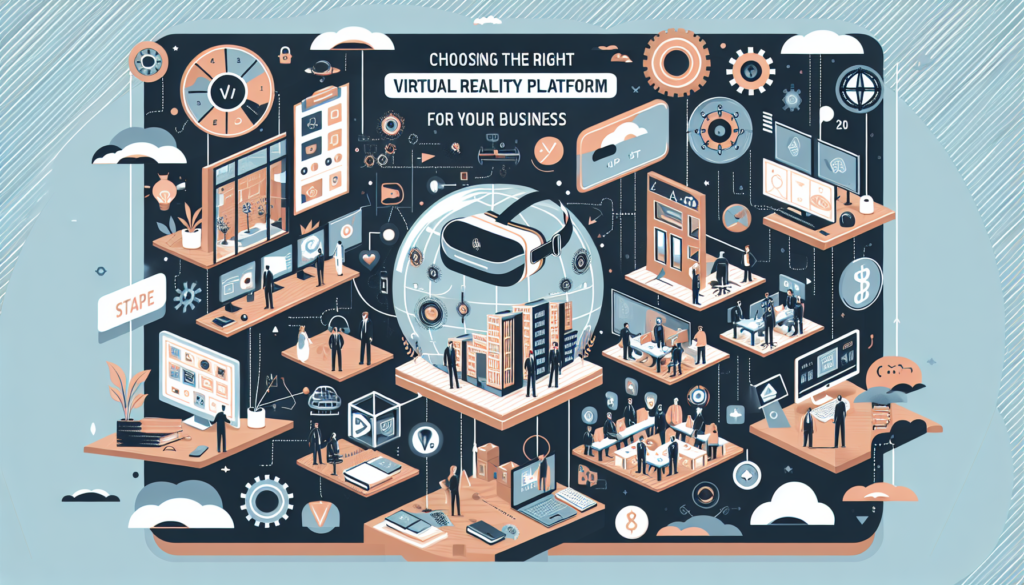Today, virtual reality (VR) is no longer exclusively associated with entertainment and leisure. Its adoption in the business realm has catalyzed an unprecedented technological revolution. From product design and employee training to immersive customer experiences, VR opens up a range of opportunities for companies looking to differentiate themselves in a market saturated with competition. Choosing the right VR platform for a business requires a holistic understanding of technical parameters, practical applications, and future projections, ensuring an informed and strategic decision that aligns with business objectives.
Technical Evolution in Virtual Reality Platforms
The technical evolution of VR has been exponential, with significant advancements in terms of hardware and software. At the core of these advances is an increase in the resolution of headsets, improved motion tracking systems, reduced latency, enhanced ergonomics, and the development of more sophisticated haptic interfaces. Assessing these technical features is crucial to selecting the platform that best fits both the specific market niche and the operational needs of a company.
Resolution and Field of View
The resolution of headsets determines the clarity of the visual experience, and a wide field of view (FOV) increases immersion by allowing users to see an expansive area without turning their heads. The latest iterations of VR hardware are pushing the standard towards screens with a 4K resolution per eye or higher and an FOV approaching 180 degrees.
Tracking and Latency
Accurate motion tracking is indispensable for a compelling VR experience. Leading platforms use either external tracking with base stations or internal sensors called “inside-out” tracking. Latency, the delay time between the user’s action and the visual response, should be minimal to prevent sensory desynchronization and the consequent motion sickness.
Interactivity and Haptic Feedback
Haptic controllers and gloves are evolving to offer tactile interactivity, with levels of feedback ranging from basic vibration to variable resistances and simulated textures. These innovations are essential for applications that require great detail in the manipulation of virtual objects, such as medical training or precision engineering.
Practical Applications and Needs Analysis
Analyzing practical case studies helps identify VR platforms that have generated tangible results across various sectors. Training and simulation are among the most fruitful areas, proving effective in reducing risks and costs in environments like surgery, aviation, or manufacturing. For sectors that prioritize customer interaction, such as real estate or tourism, VR platforms with capabilities for photorealistic rendering and easy integration with marketing materials are more suitable.
Case Study: VR Training
A notable case study is the use of VR platforms for staff training in the energy industry. Companies like Shell have implemented VR simulations to train workers in safety procedures, allowing for safe and repeatable practice of high-risk scenarios without the associated costs of traditional training.
Future Projections and Adaptability
As technology advances, VR platforms must be able to adapt to new developments to avoid rapid obsolescence. This means choosing platforms with clear development roadmaps, a commitment to regular updates, and an active developer community. Expansion towards mixed reality (MR) and the integration of artificial intelligence are future directions to consider, as they promise to raise VR to even more sophisticated levels of interaction and autonomy.
Compatibility and Scalability
The selected platform must be compatible with existing systems and a business’s IT infrastructure. Additionally, scalability should be considered to accommodate future expansions in both the number of concurrent users and the complexity of applications.
Upcoming Innovations: IoT and VR
The convergence of VR with the Internet of Things (IoT) and real-time data can create virtual scenarios that accurately replicate real-world conditions, opening possibilities for predictive maintenance and dynamic training.
The Impact of SEO on Choosing a VR Platform
While SEO may seem tangential to the choice of a VR platform, content created in virtual reality can be used to enhance online visibility. Well-designed VR experiences can generate significant engagement and be shared on networks, increasing a business’s digital presence. Therefore, selecting a platform that facilitates the creation of engaging and shareable content is a significant competitive advantage.
Choosing the right VR platform for a business is a process that combines a detailed assessment of technical specifications with a profound understanding of the practical needs present and future of the sector in which it operates. It is a balance between the current state of the art and strategic planning to evolve alongside emerging technology trends. With a visionary perspective and a grounded implementation, virtual reality can become a powerful tool to innovate and lead in the digital economy of the future.

